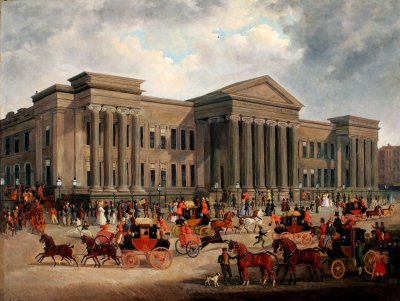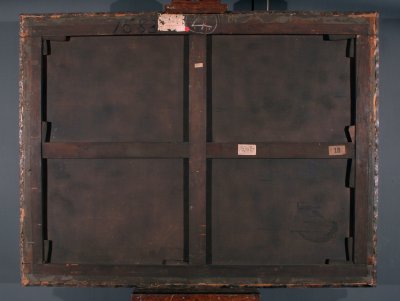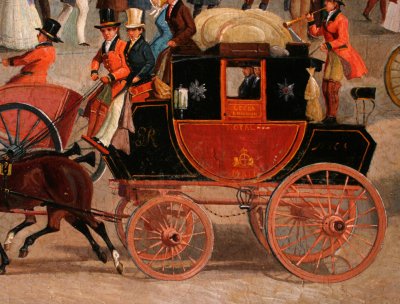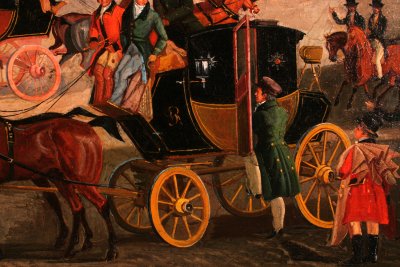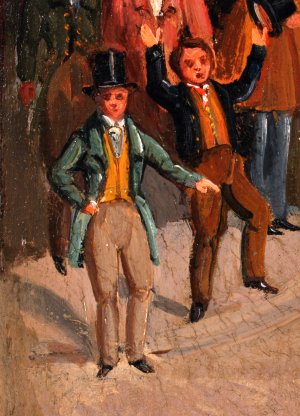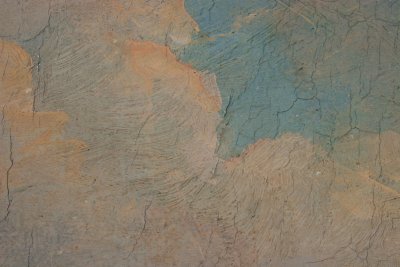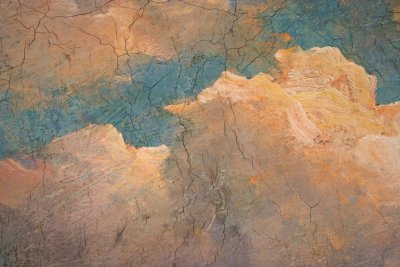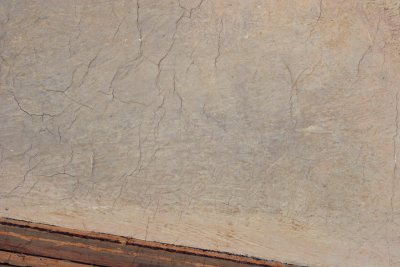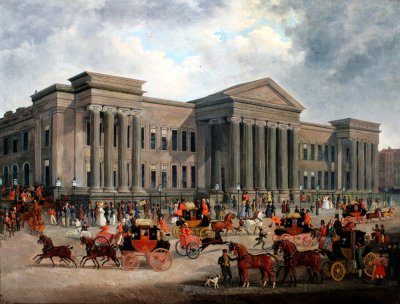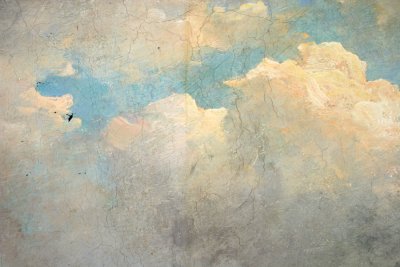TITLE:
The General Post Office, London
TECHNIQUE: Oil on canvas
SIGNATURE: J.Pollard 1821, bottom right corner, see info below
DIMENSIONS: 1176 x 1538 mm
FRAME: Wooden, gesso moulded, gilded gold
TREATMENT: October - December 2007
Historical information
The General Post Office is not the work of Pollard but it has been suggested that it might be by an artist called Sinclair working in the 19th Century who specialized in copying sporting prints. The original is owned privately in the U.S.A. and is the same size as the print, i.e. rather smaller. The artist may have not been responsible for the date and signature of 1821 and it is possible that both were included at a later date. It is of interest that the building did not go up until 1828 or 1829 and the date in Roman figures is seen clearly on the portico, (1829). The date after the signature is then obviously a mistake.
CONDITION REPORT
SECONDARY SUPPORT
This is a 6 member mortise-and-tennon stretcher (W: 18 mm T: 100 mm), 11 keys are present and one is missing. The general condition is good. The stretcher may be a later addition, as the painting has been lined commercially.
The following inscriptions appear o the verso:
βJames Bourlet & Sons, Ltd.,
Fine Art Packers, Frame Maker
C 23863
17 & 18, Nassau Street,
Mortimer Street, W.
Phone;- Museum 1817 & 7588β
The label is seen on the top right-hand side is on fine pulp paper printed in black ink print. A second label reads β5β on the right-hand side using a similar type of paper and ink but appears darker in colour. A third label shows the museum accession number on the left-hand side. A fourth label can be seen, which appears to be a number but this can not be read as the accession label is adhered over this.
PRIMARY SUPPORT
The primary support is a medium-weight tabby weave canvas. The lining canvas is of the same weave but slightly thinner in weight. The condition of the lining canvas is good and the primary support sound. Evenly placed copper tacks attach the canvas to the stretcher. The canvas turn over edge (W: 38 mm) is further adhered with staples. The tacking margin is 7 mm in width. Some dirt is caught between the canvas and strainer.
GROUND
The ground appear to be cream in colour. The ground layer is lifting up with the cupping of the paint layer and, thus, is not in a sound condition.
PAINT LAYER
Brush strokes can be seen clearly, and the paint is fairly even with slight impasto in the highlights. Cupping is extensively seen over the whole painting and a few localized areas losses have already occurred. The cupping is in the pattern of an overall drying cracks pattern. The stretcher bar mark can be seen and this is particularly clear in the light sky area. More extensive drying cracks can be seen in the browns and blacks. Over-paint which appears slightly thicker and darker than the original can be seen in some localized areas and along the edges, see photographic details.
VARNISH LAYER
The natural resin varnish layer is discoloured and a layer of surface dirt covers this. This is not the original varnish.
TREATMENT CARRIED OUT
- Photographic record was taken and this was maintained throughout treatment.
- The paint layer was first consolidated using Beva 371. This treatment was repeated.
- Tests were carried out to remove the surface dirt. After the appropriate reagent was found, cleaning proceeded safely and effectively. Cleaning proceeded using a swab stick.
- Following tests including a safety margin-cleaning test, an organic solvent was found to remove the discoloured varnish layer safely and effectively. Cleaning proceeded using a swab stick. During varnish removal, it was found that there were two sets of over-paint. One was thinner and more solvent sensitive and a thicker layer that was not sensitive to the solvent used for varnish removal.
- Dirt was removed from between the canvas and the stretcher bar and the back of the canvas was cleaned.
- An isolating brush conservation varnish was applied. Losses were retouched and a final conservation varnish was applied.
- The frame was cleaned; both front and back, losses filled and retouched and the painting secured using brass plates.
